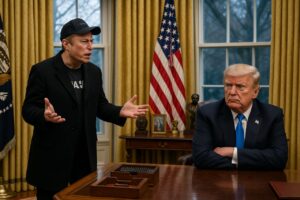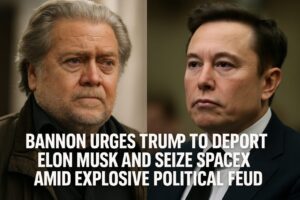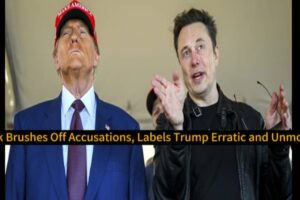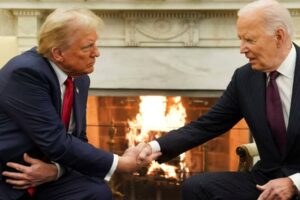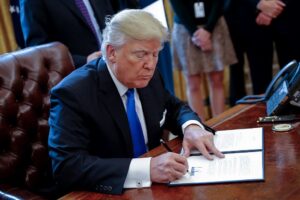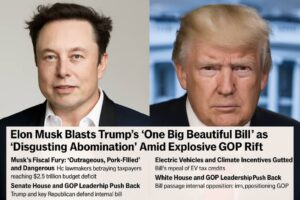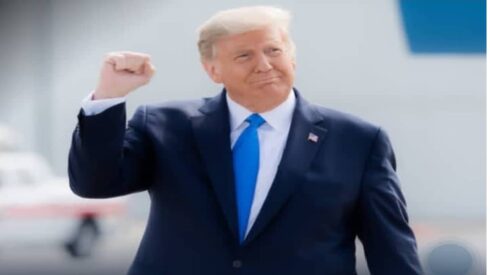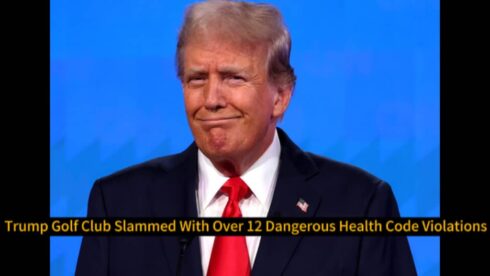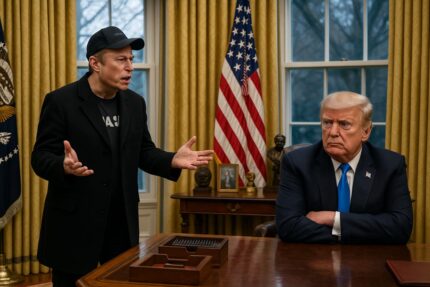President Donald Trump has reignited his trade war rhetoric, doubling down on the economic benefits of tariffs despite growing recession fears and a stock market plunge. In a recent conversation aboard Air Force One, Trump reiterated his belief that the U.S. could generate “hundreds of billions of dollars” through strategic trade policies. He proposed further increasing tariffs on Chinese imports and other foreign goods to shield domestic industries and reduce reliance on overseas manufacturing.
While Trump insists tariffs will bolster the American economy, financial markets have shown deep concern. Investors fear that heightened trade tensions could exacerbate economic instability, particularly as key industries brace for higher costs and disrupted supply chains.
Recent Tariff Actions and Economic Implications
In February 2025, President Trump signed an executive order imposing a 10% tariff on all Chinese imports, effective February 4. In retaliation, China levied a 15% tariff on U.S. coal and liquefied natural gas and a 10% tariff on oil and agricultural machinery. Further escalating tensions, China launched an antitrust investigation into Google and imposed export controls on critical metals such as tungsten.
These aggressive trade measures have rattled the stock market. On March 10, 2025, the Dow Jones Industrial Average fell by over 2%, while the Nasdaq plunged by 4%, marking its worst performance since the COVID-19 pandemic. Kevin Hassett, the White House’s chief economist, attempted to assuage fears, labeling the downturn as “blips in the data.” He maintained that economic growth remains on track due to prior tax cuts, dismissing the likelihood of a recession despite the market’s significant losses.
Historical Context and Long-Term Effects of Tariffs
Economic history suggests that tariff wars, even when temporary, can have lasting consequences. President George W. Bush’s steel tariffs in 2002, though short-lived, left American manufacturers struggling with higher input costs, resulting in job losses and economic stagnation. Similarly, Trump’s first-term trade war with China led to price increases for consumer goods and supply chain disruptions that persisted for years.
Economists warn that renewed tariff policies could trigger similar inflationary pressures, further destabilizing the economy. With global supply chains still recovering from the pandemic, trade restrictions could intensify cost burdens on U.S. companies, reducing competitiveness and slowing economic growth.
Market Reaction and Investor Sentiment
The financial markets have responded negatively to Trump’s tariff strategy. On Monday, the Nasdaq Composite Index plummeted by 4%, marking a six-month low. The S&P 500 declined by 2.7%, while the Dow Jones Industrial Average dropped by 2.1%. Concerns over a potential recession are mounting, with investors pointing to aggressive trade policies and reduced government spending as contributing factors.
Technology stocks have been particularly hard hit. Nvidia and Tesla saw significant stock declines, reflecting broader market instability. Investors have sought safety in U.S. Treasury bonds, leading to a decline in yields as uncertainty grips Wall Street.
Import Trends and Global Trade Disruptions
Despite the looming tariff risks, U.S. container import volumes surged by 4.7% year-over-year in February 2025, reaching over 2.2 million TEUs—the second-highest February volume on record. This increase was largely driven by a 7.9% rise in imports from China, fueled by resilient consumer demand and businesses accelerating shipments ahead of anticipated tariff hikes.
However, analysts predict that ongoing trade tensions will likely dampen future import volumes. If tariffs continue to escalate, companies may seek alternative supply chain solutions, shifting production to other countries or slowing their purchasing activities to mitigate risks.
Policy Shifts and Industry Responses
Since resuming office in January 2025, Trump has signed over 50 executive orders, reshaping federal policies in significant ways. His administration has aggressively pursued measures such as terminating birthright citizenship and launching a strategic bitcoin reserve. His tariff policies, though aimed at protecting American jobs, have faced strong opposition from industries reliant on international trade.
In response to mounting pressure from major automakers such as Ford and General Motors, Trump has temporarily suspended the 25% tariffs on imports from Mexico and Canada to support American car manufacturers. However, these tariffs are scheduled for reassessment on April 2, leaving companies uncertain about their long-term strategy.
A Balancing Act Between Protectionism and Stability
President Trump’s renewed push for tariffs reflects his administration’s broader strategy to prioritize domestic manufacturing and economic self-sufficiency. However, these measures come with risks, including market volatility, inflationary pressures, and strained international relationships.
With the stock market reacting negatively and recession fears escalating, the coming months will be crucial in determining whether Trump’s tariff-driven policies yield economic gains or lead to further financial turmoil. Investors, businesses, and policymakers alike will be closely monitoring the unfolding economic landscape as the administration continues its high-stakes gamble on trade policy.



